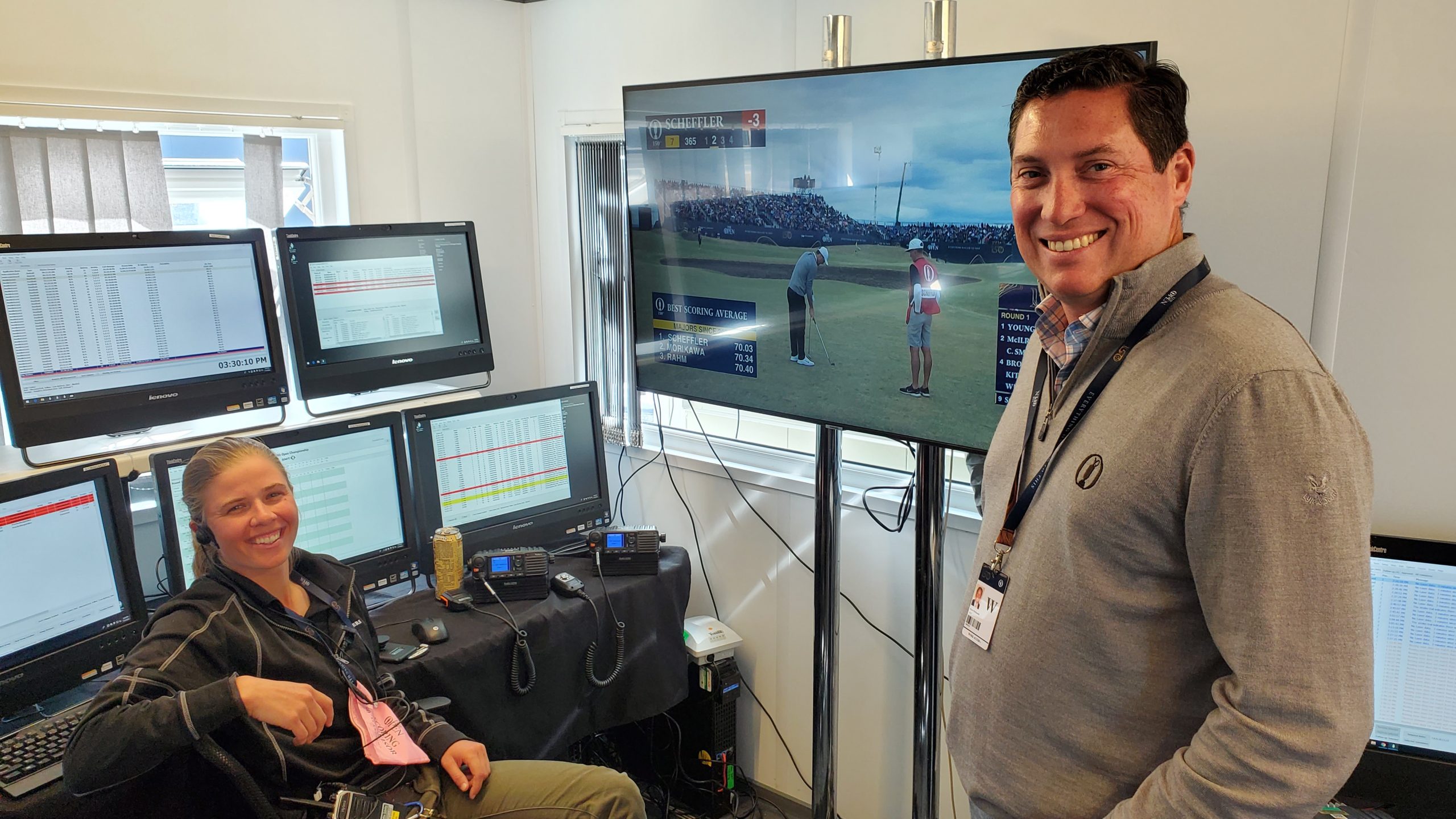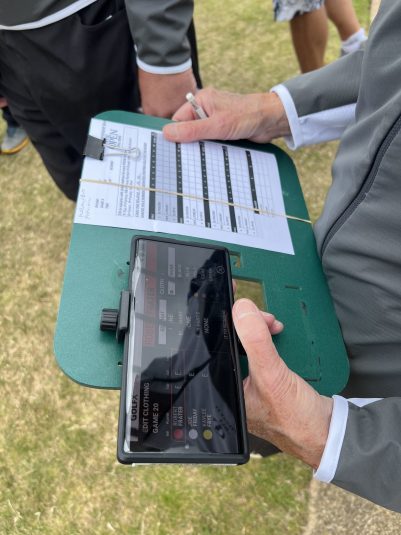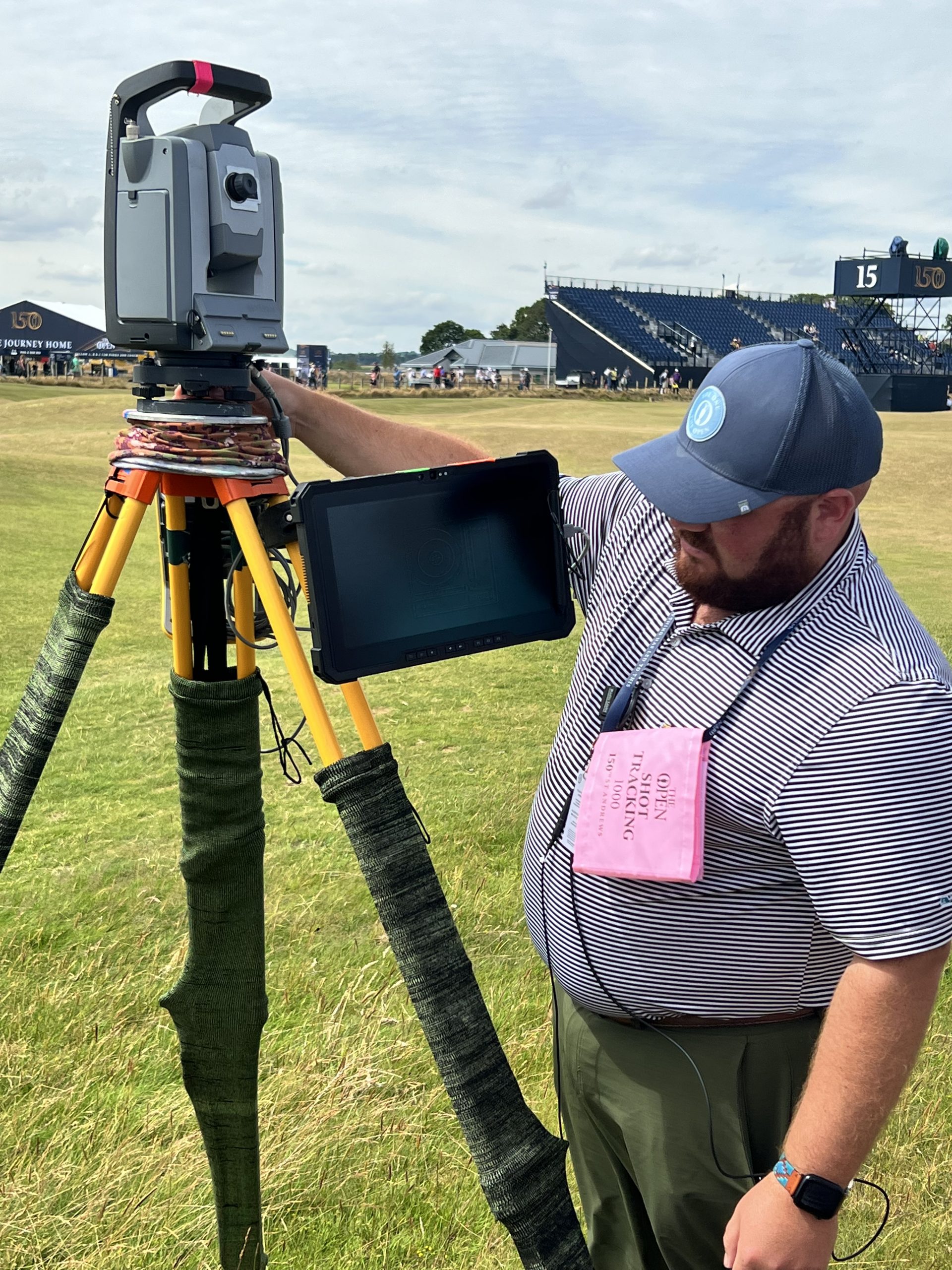Live From The Open Championship: SMT Ball-Location Data Makes Open Debut
Next goal for SMT is projecting where a ball is going to land
Story Highlights
SMT Golf Lead Ryan McDonald and a team of 24 are onsite at the 150th Open Championship with something new for an Open Championship: the resting location for every shot hit.
“It’s something the R&A has been looking at for a number of years, and we were just trying to find the right time to add it,” says McDonald. “It improves their digital product, improves their broadcast product, and even improves their rules team and course preparation and planning.”

SMT Operations Specialist Mary Grace Venable and Golf Lead Ryan McDonald inside SMT’s cabin at the 150th Open Championship
Getting the X, Y, and Z coordinates of a ball’s resting location and then mapping it 3D makes it a lot easier to calculate how far the ball has traveled or how many yards are left to reach the pin. And it’s a process that involves a mix of manual and automated workflows. It begins with a scorer who walks the entire 18 holes with a group and can send notifications to the spotters on a given hole that a shot is incoming.
“In the landing areas, there is a team of two,” says McDonald, “and there is a spotter with a tablet who gives a preliminary estimate on a grid map of where they think the ball is resting. There is a laser operator using a survey-style laser to shoot the actual coordinates and give a more precise location. For the par-5s, there will be three teams.”
Within 10-15 seconds of the ball’s coming to rest, the data is populated into the SMT system and distributed to various entities, including digital productions, broadcasters, and even the on-course videoboard operations.
“We have staff monitoring our wireless network for all those handheld devices, and we have teams validating the data to make sure it’s accurate,” adds McDonald. “We also have part of our team doing the display production on the 17 green-side digital walls and even a team helping the manual scoreboards. There’s a traditional and digital aspect of this event as things like the yellow scoreboard are iconic.”
According to McDonald, about 90% of the work done at The Open is for the R&A, but some work is also being done for the European Tour Productions (ETP) world feed and NBC, which are managing the telecast.
“We have a full-course wind system that we deploy on the golf course for tagging real-time shots with the wind conditions,” he says. “And there’s a graphics interface that we’ve given ETP for displaying the real-time wind conditions.”
The explosion of digital distribution has been a big driver of next-generation statistics.
“The mindset has changed from things being done just for the broadcast to being shared across multiple display devices,” McDonald explains, “and now it’s about how do we connect people across the world to their favorite player and give them everything just like they would have if they were onsite. One challenge is to increase the timeliness of the data [coming] in, and that is probably our next evolution.”

Handheld digital devices make it easy for spotters on the course to log information related to on-course action.
The use of data on things like ball speed, spin rate, apex, and ball location is becoming a bigger part of the golf-viewing experience, whether on TV or digital devices. McDonald says the biggest challenge is figuring out how to automate the vast number of data points gathered on golf courses, which are all unique and have unique holes as well.
“Every hole is like a fingerprint,” he notes, “and that’s the challenge that golf presents more than any other sport when it comes to automating it. It takes a lot more people and a lot more staff to collect the data set than it would for an arena-style sport.”
McDonald clearly watches a lot of golf and also sees where the new opportunities lie.
“The next evolution,” he predicts, “will be taking the radar, club speed, and ball speed and projecting where a ball is going to go based on that spin rate and club speed while it is in the air. The impact the wind has on a shot is the X factor that every player talks about. For example, the winds are calm today, and we’re seeing some low scores, including a 64. When the wind picks up, it becomes the X factor. How will that wind impact a professional golfer, and how can we have analytics around how difficult a shot is based on the conditions?”
As with baseball, basketball, and football, the quality of analytics will continue to improve for golf, especially as more and more data scientists (and coaches, players, and fans) crunch the numbers and begin to fully understand them.

